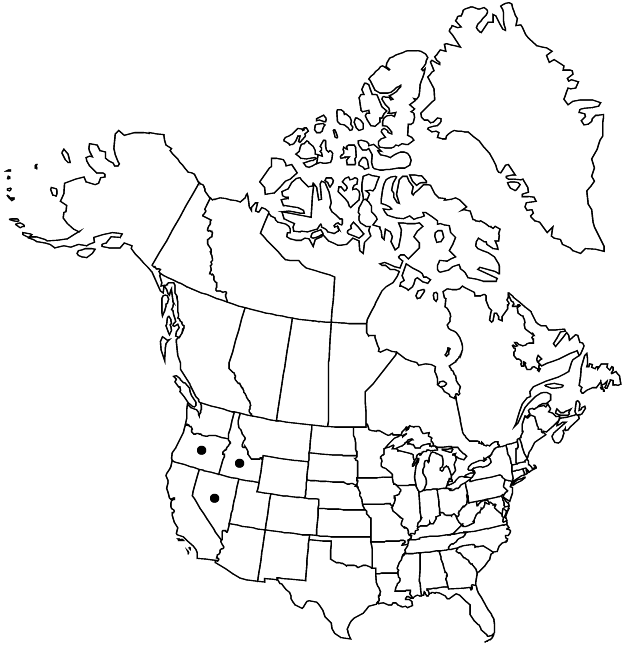Eriogonum watsonii
Proc. Amer. Acad. Arts 8: 182. 1870.
Herbs, spreading, annual, (0.5–) 1–4 dm, glabrous, glaucous, greenish to grayish. Stems: caudex absent; aerial flowering stems erect, solid, not fistulose, 0.4–0.8 dm, glabrous. Leaves basal; petiole 1–3 cm, mostly floccose; blade subcordate to orbiculate, (0.5–)1–2.5 × (0.5–)1–2.5 cm, densely white-tomentose abaxially, less so to subglabrous and grayish to greenish adaxially, margins plane. Inflorescences cymose, open, spreading, (5–)10–20 × 5–20 cm; branches glabrous, glaucous; bracts 3, scalelike, 1–2 × 0.5–1 mm. Peduncles deflexed or curving and ascending upward, straight or slightly curved, slender, 0.3–1.5 cm, glabrous. Involucres narrowly turbinate, (1.5–)2–3 × 0.5–1.5 mm, glabrous; teeth 5, erect, 0.4–0.8 mm. Flowers 2–2.5 mm; perianth white to pink with greenish to reddish midribs, becoming pinkish to reddish, glabrous; tepals dimorphic, those of outer whorl oblong or obovate, those of inner whorl ovate; stamens included, 1.5–2 mm; filaments glabrous. Achenes brown, 3-gonous, 1.5–2 mm, glabrous. 2n = 40.
Phenology: Flowering May–Sep.
Habitat: Sandy to gravelly flats, slopes, and washes, saltbush, greasewood, sagebrush, and mountain mahogany communities, pinyon-juniper woodlands
Elevation: 1100-2500 m
Distribution

Idaho, Nev., Oreg.
Discussion
Eriogonum watsonii is found in the center of northern Nevada (Churchill, Eureka, Lander, and Pershing counties), with scattered populations in the Elko area of Elko County, and near Ione in Nye County. To the north is a second center, where the plants are found mainly on the bluffs and flats above the Snake River in southwestern Idaho (Canyon, Owyhee, and Twin Falls counties), westward through the Harper area of Malheur County, Oregon, to near Buchanan in eastern Harney County. They also occur in a series of disjunct populations in and around Rome in Malheur County. Most of the individuals in these populations have deflexed peduncles, but some have long, gracefully upward-ascending peduncles that are most distinctive. The species usually is common but only rarely weedy along roadsides.
Selected References
None.